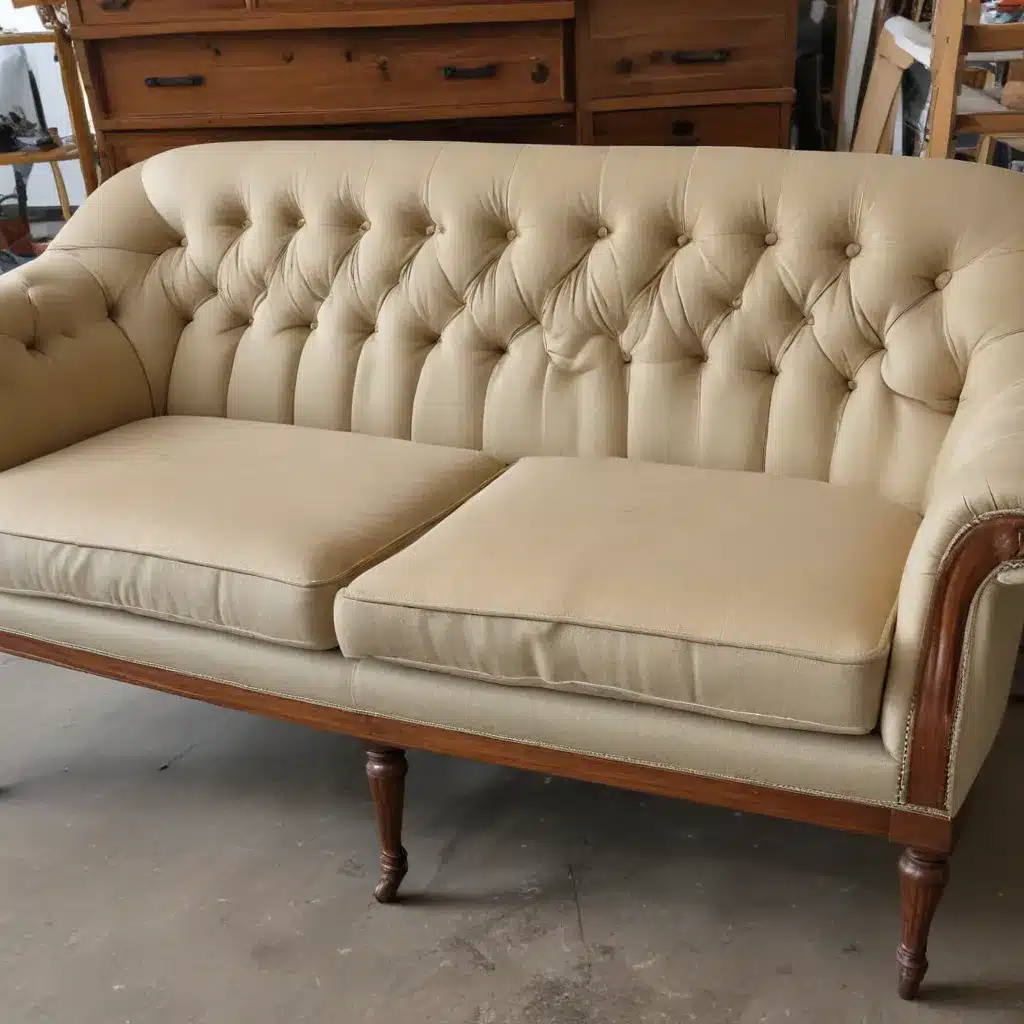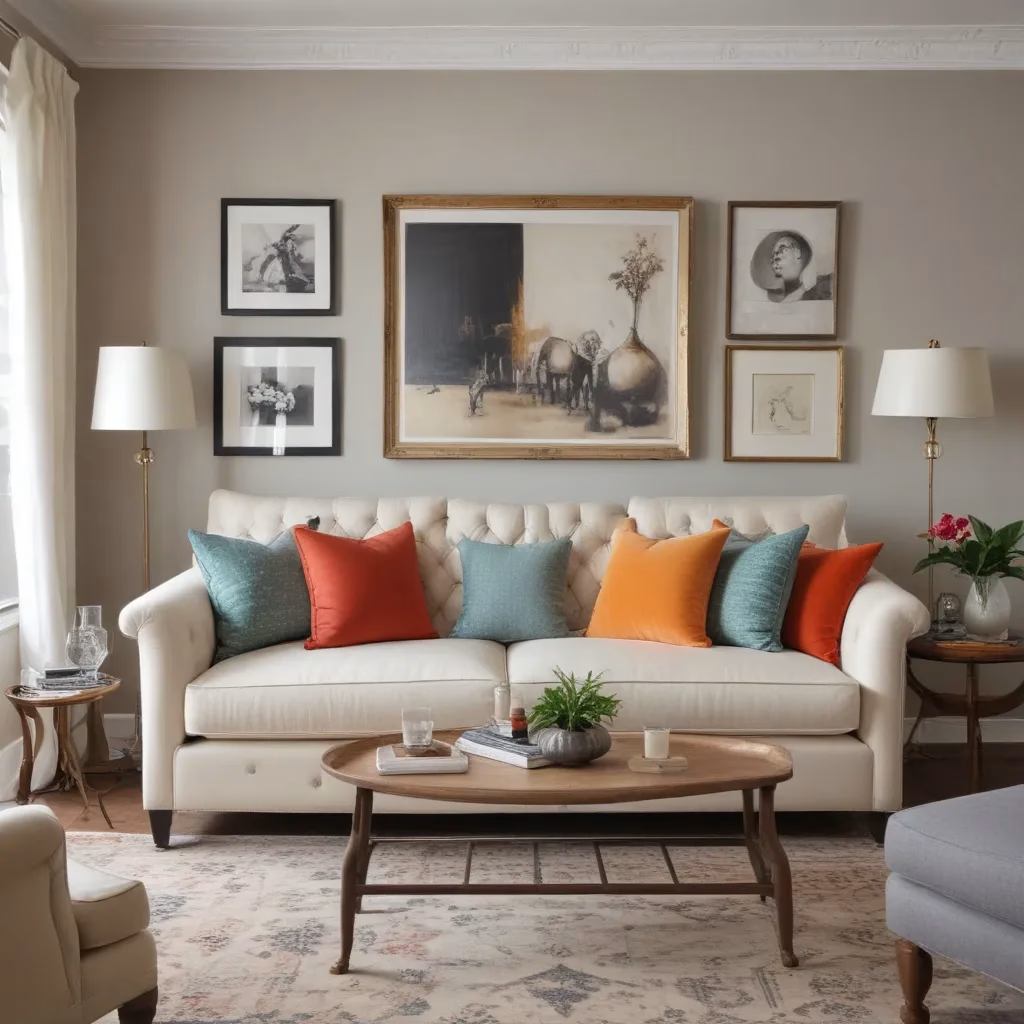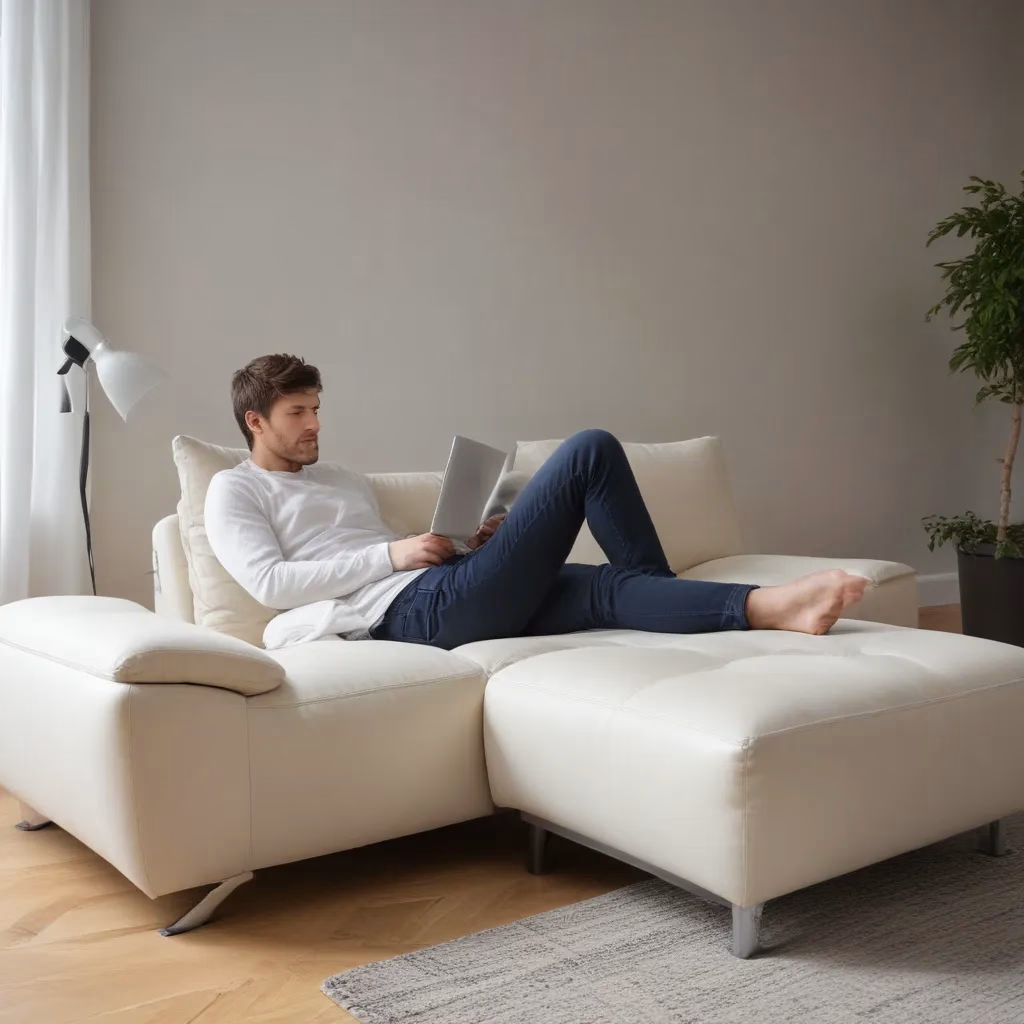
Uncovering the Beauty of Pre-Loved Sofas
In the ever-evolving world of interior design, the allure of vintage and pre-loved furniture continues to captivate homeowners across the UK. One such timeless piece that has stood the test of time is the humble sofa. While newer models may boast sleek lines and modern materials, there is something undeniably charming about breathing new life into a vintage sofa through the art of reupholstery.
Reupholstering a sofa, whether it’s a mid-century classic or a treasured family heirloom, allows you to customize the piece to suit your unique style and preferences. By skillfully reworking the fabric, padding, and frame, you can transform a dated or worn-out sofa into a stunning centerpiece that complements your home’s aesthetic.
The Allure of Vintage Sofas
Vintage sofas hold a special place in the hearts of many UK homeowners. These pre-loved pieces often possess a certain character and charm that can be difficult to replicate in mass-produced contemporary models. From the rich, textured fabrics to the intricate detailing of the frame, vintage sofas have a way of adding depth and personality to any living space.
Oftentimes, these vintage sofas have stood the test of time, surviving through decades of use and weathering. While they may show signs of wear and tear, these imperfections can be seen as a testament to their enduring quality and the stories they hold. By reupholstering a vintage sofa, you have the opportunity to preserve its unique history while adapting it to your modern sensibilities.
Embracing the Art of Reupholstery
Reupholstering a sofa is a creative and rewarding process that allows you to breathe new life into a beloved piece of furniture. Whether you’re looking to update the color scheme, revitalize the upholstery, or address any structural issues, the art of reupholstery offers a versatile solution.
One of the primary advantages of reupholstering a sofa is the ability to customize it to your exact specifications. From the choice of fabric to the selection of cushion fillings, you can tailor the sofa to suit your personal style and comfort preferences. This can be particularly beneficial for those with specific requirements, such as individuals with allergies or a preference for natural, sustainable materials.
Moreover, reupholstering a vintage sofa can be a more environmentally-conscious choice compared to purchasing a brand-new model. By giving new life to an existing piece of furniture, you’re reducing the demand for new resources and contributing to a more sustainable approach to home furnishings.
Navigating the Reupholstery Process
The reupholstery process can seem daunting at first, but with the right guidance and a bit of patience, it can be a rewarding and transformative experience. Here are some key steps to consider when embarking on a sofa reupholstery project:
-
Assess the Sofa’s Condition: Begin by carefully examining the sofa’s frame, cushions, and existing upholstery. Identify any structural issues, such as loose joints or worn-out springs, that need to be addressed before the reupholstery process can begin.
-
Choose the Right Fabric: Select a fabric that not only aligns with your design vision but also suits the intended use and wear-and-tear of the sofa. Consider factors such as durability, texture, and color to ensure a harmonious and long-lasting finish.
-
Prepare the Sofa: Carefully remove the existing upholstery, taking note of the construction and order of the process. This will provide a valuable reference when it comes time to reassemble the sofa.
-
Repair and Restore the Frame: Address any structural issues with the sofa’s frame, such as loose joints or worn-out wooden components. This step is crucial to ensuring the longevity and stability of the reupholstered piece.
-
Upholster with Care: Meticulously apply the new fabric, paying close attention to achieving a seamless, professional-looking finish. This may involve techniques like pleating, tufting, or tailoring the upholstery to the sofa’s unique shape.
-
Finish with Attention to Detail: Complete the reupholstery process by adding any finishing touches, such as decorative trim or accent buttons, to enhance the overall aesthetic of the sofa.
Throughout the reupholstery journey, it’s important to work with skilled professionals or carefully follow instructional guides to ensure a successful transformation. The time and effort invested in this process can yield remarkable results, transforming a tired, outdated sofa into a stunning, one-of-a-kind centerpiece for your living space.
Sofa Materials and Their Advantages
When it comes to reupholstering a vintage sofa, the choice of materials can have a significant impact on the final outcome. From durable fabrics to plush cushion fillings, each material offers its own unique advantages. Let’s explore some of the most popular options:
Fabrics
Velvet: A luxurious and timeless choice, velvet offers a rich, velvety texture that can add depth and elegance to a sofa. Velvet is known for its durability and resistance to wear and tear, making it a popular option for high-traffic areas.
Linen: Linen is a natural, breathable fabric that can lend a relaxed, casual feel to a vintage sofa. It’s a versatile choice that can work well in a variety of interior styles, from farmhouse to modern.
Leather: For a sophisticated and timeless look, leather is a popular choice for sofa upholstery. Genuine leather can last for years with proper care and maintenance, and it develops a unique patina over time.
Microfiber: A more budget-friendly option, microfiber is a synthetic fabric that offers a soft, suede-like feel. It’s highly durable and easy to clean, making it a practical choice for families with young children or pets.
Cushion Fillings
Foam: High-density foam is a popular choice for sofa cushion fillings, as it provides firm, supportive comfort. It’s a cost-effective option that can be easily replaced or customized to suit individual preferences.
Feathers: For a luxurious, plush feel, feather-filled cushions offer a soft and cozy seating experience. However, they may require more maintenance and fluffing to maintain their shape over time.
Memory Foam: Memory foam conforms to the shape of the body, providing exceptional comfort and support. It’s a popular choice for those seeking a tailored, body-hugging feel.
Polyester Fibers: Polyester-filled cushions offer a balance of comfort and affordability. They are durable, easy to clean, and can be customized to achieve the desired level of firmness.
When selecting materials for your reupholstered sofa, consider factors such as your lifestyle, budget, and personal preferences to ensure the perfect blend of style and functionality.
Elevating Your Living Space with Reupholstered Sofas
The art of reupholstering a vintage sofa is not merely a practical solution; it’s a way to infuse your living space with a unique and personalized touch. By reviving a pre-loved piece of furniture, you can create a focal point that reflects your individual style and personality.
Imagine a beautifully reupholstered sofa, its rich fabric or soft leather complementing the surrounding decor. It becomes a centerpiece that sets the tone for the entire room, seamlessly blending the old and the new to create a harmonious and visually captivating space.
Moreover, a well-executed reupholstery project can breathe new life into a beloved family heirloom, preserving its sentimental value while adapting it to your modern sensibilities. This not only adds charm and character to your home but also tells a story of your personal connection to the furniture.
Embracing Sustainability Through Reupholstery
In an era where environmental consciousness is a growing priority, reupholstering a vintage sofa offers a sustainable alternative to purchasing brand-new furniture. By giving new life to an existing piece, you’re reducing the demand for new resources and contributing to a more eco-friendly approach to home decor.
Additionally, reupholstery can be a more cost-effective solution compared to investing in a completely new sofa. By carefully restoring and revitalizing a pre-loved piece, you can enjoy the benefits of a high-quality, customized piece of furniture without the hefty price tag associated with a brand-new model.
Conclusion
Embracing the art of reupholstering a vintage sofa is a journey that not only transforms the physical appearance of your living space but also holds the power to evoke a sense of timeless elegance and personal connection. Whether you’re drawn to the rich history of a mid-century classic or the sentimental value of a family heirloom, the process of reviving a pre-loved sofa can be a deeply rewarding experience.
By skillfully blending traditional techniques with modern materials and design sensibilities, you can create a one-of-a-kind piece that seamlessly integrates into your home’s unique aesthetic. So, why not uncover the hidden gems in your local antique stores or flea markets and embark on a reupholstery adventure that will breathe new life into your living space? Visit https://sofaspectacular.co.uk/ to explore a wide range of furniture options and expert reupholstery services to help you achieve your dream sofa.



